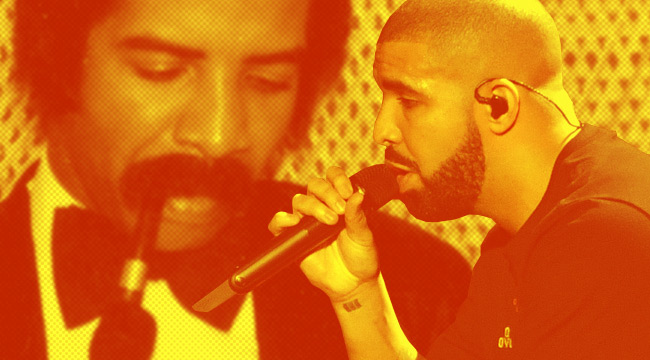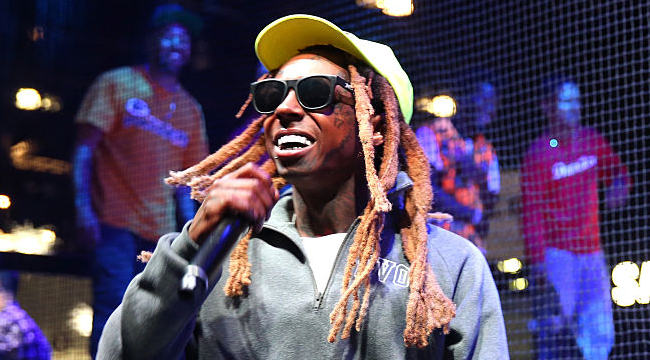
Love him or hate him, it seems the world is anxiously anticipating Drake’s new album/mixtape/playlist or whatever he’s calling it More Life. The problem is, nobody knows when it’s going to arrive, and judging by the multiple delays Drake himself is included in that uncertainty. In the world of digital-only albums, Apple Music radio shows, free releases, DatPiff, Soundcloud and every other manner to distribute music without manufacturing physical product and shipping it into stores for consumers to consume, it literally could arrive at any moment. Ironically enough, Drake is part of the reason the climate is that way, and he, along with big names like Jay Z, Kanye West, Beyonce and more, have essentially obliterated the concept of a release date or a typical album release.
Like many industry-wide trends, the new release standards originated in hip-hop, and it’s opportunistic and resourceful underground. The reverberations would be felt a decade later and cause the entire industry to literally recalibrate the way they not only release music, but when and how they count the music that is consumed.
The old, traditional norm for an album or EP release is as follows: An artist drops a single or singles aimed at radio consumption in order to gain as many ears and eyes as possible, when enough eyes and ears are gained said artist then begins marching towards a release and even offers a scheduled release date, said artist does a press tour to remind fans of the album and eventually the album releases.
As mixtapes began to shape the climate of rap in the early to mid-2000s, suddenly that model had began to rescind. Now, an artist could release songs whenever, with little to no notice, and as new, original production became even less of a necessity they could release songs often.

When prime Lil Wayne kicked things into high gear a new standard was set, gone were the days when an artist could release 13 songs every 18 months, now some were releasing 13 songs every month, if not more. Now, artist were expected to keep a constant stream of material online to feed fans insatiable thirst for new music.
This free music became serious business as traditional album sales and the value of music plummeted while free music was in abundance. The popularity of free music could lead to the new industry gold mine — live shows. As such, it was worth it to allocate funds towards free music as the best and most popular artists could make up for it in the long run.
Wayne was on the forefront of that, saying last year that he began to take mixtapes more serious as he noticed they were getting more recognition than traditional albums.
https://youtu.be/e_4ajWGeCBs
“It became a different approach to the music, meaning, I no longer wanted Drama to put out only songs I was doing my little remixes,” Wayne told DJ Drama in an interview while on a press tour promoting ColleGrove with 2 Chainz. “I started giving him original music and I started approaching mixtapes as, they’re actually getting a little more recognition than the albums so start paying a little more attention to what you’re doing and how you’re doing it on there.” Wayne noted how costly the process became, saying “I spent over a hundred racks putting out a mixtape getting my sh*t mixed, mastered.”
The mixtape essentially freed artists’ from the shackles of major label standards and practices. Gone were the restraints that come with copyright laws restricting sampling, gone were the extra chefs in the kitchen trying to sway the artistic direction of a project and gone was the pressure of record sales. Artists were simply left to their own devices and allowed to create.
Also gone was the demand of a release date, as artist seemed to drop music on their own time and at a whims notice. If a new song dropped and they liked the beat, a rapper might rap over it and upload the “remix” for consumption that night. It a rapper’s true album kept getting delayed or put on the back burner by a label they could upload it on Datpiff for their fans and to buck the system like J Cole did with Friday Night Lights.
Drake was one of those artist, not only taking his time and approaching mixtapes like actual albums, but also releasing them whenever and wherever he wanted. He became notorious for his late night releases, and when his monumental mixtape So Far Gone was released, it was later than he promised, after he added finishing touches and a new interlude at the 11th hour.
In fact, the release came after a series of updates in real time, over a 30-hour stretch, long before Instagram would become the perfect platform for posts like this. First he told fans “So Far Gone will be available for download right here on October’s Very Own before midnight, Thursday February 12, 2009.” Then it turned into “I’m in the Beverly Wilshire Hotel in LA editing and mixing the tape right now. Im gonna post it as soon as i finish putting it together.” And later “Im in LA, so I got till 12 PM PACIFIC TIME!!! We still recording” along with this picture of Omarion recording “Bria’s Interlude.”
The next message, after midnight pacific time was “honestly, i am sorry, give me 1.5 hours more” before he finally released the mixtape the next morning with the caption “fashionably late” with his name and the title written on a disc with Sharpie because 2009 was basically ancient times.
Ironically enough, So Far Gone was released on a Friday, which would become the industry norm after a few more game changers from Jay Z, Kanye and Bey. The old Tuesday release date had become null and void after the new, unorthodox releases and digital music’s ability to be released simultaneously, worldwide.
As the collective The Throne, Jay and Kanye were able to beat the traditional leak that inevitably came when albums were shipped to retailers days before they were to be sold and mysteriously made it onto the internet soon after. Their plan involved a highly guarded hard drive and a complex series of staggered releases that ensured the album would be available solely in digital form for at least a week before physical copies would hit retailers. This killed the potential of a leak, and caused the world to listen to Watch The Throne together when it released in 2011, at least initially before it was eventually ripped and re-uploaded onto file sharing sites.
Beyonce combined both approaches when she released her surprise, self-titled album near midnight on a Friday night with no warning. Similar to Drake’s So Far Gone rollout, she announced the album on Instagram, with a video and a one word caption: “Surprise!”
Like The Throne before her, the album was only available digitally for several weeks, forcing fans to consume it how she wanted: as a whole, with 17 videos and simultaneously with other fans in a frenzy. It was a roaring success, smashing iTunes records and as she put it later “Changed the game with that digital drop, Know where you was when that digital popped… I stopped the world.”
And she was right. The strategy has been adopted by artists of all ilk and throughout all genres. Miley Cyrus dropped a surprise album immediately after the MTV VMA’s in 2015, J. Cole used the idea twice, and other artists like Kendrick Lamar — who dropped his album To Pimp A Butterfly a week early and as digital only, for a time — and more using their own variations of the surprise album.
Now, all these years later Drake continues to toy with the concept of a release date. With his radio show on Beats 1 OVO Sound, and his deal with Apple Music, he basically has free reign to release new music whenever he chooses on Apple’s airwaves. Apple Music is a native app on over a billion iPhones, and can of course be streamed on any iTunes on any computer for free, giving Drake literarily the entire world as an audience.
These days record releases aren’t releases so much as they’re listening parties, wherein the world gathers around computers like they’re radios in the ’40s and takes in the new music in unison. Everybody wants to be involved, to tweet reactions live, to screenshot the player and post it on Instagram, to post to videos their Snapchat story of them dancing to the music or listening to it in the car. Everybody is involved, and everybody is in a rush to prove their involvement.
So Drake will drop More Life whenever he pleases, and thanks to advances that he helped spearhead, he now has the freedom to do just that. And really, we don’t need a release date. Everybody is connected at all times, glued to their phones and computers and able to dial up just about any song — even Prince’s songs soon — at a moment’s notice. So whenever he does drop it with a surprise episode of OVO Sound, we’ll all be there. And no, we didn’t get a scheduled date in advance, but we’ll all be there for the event.
Yes, that robs this generation of the joy of going to a record store on a Tuesday morning and grabbing that CD you’ve been anxiously waiting for — or scouring the internet for a download link — but maybe it’s better and more exciting that way. Like Beyonce said, the world stops when new albums drop now and in a world of fleeting moments, short attention spans and very little interaction, we have real memories and get to pay attention to something and be together for an hour whenever our favorite artists decide it’s time for new music. Even if it’s the middle of the night on a Friday.
In fact, especially if it’s the middle of the night on a Friday.






